Big Enough for Our Family of Three
Discover mid-century Waiatarau Freemans Bay through the eyes of six-year-old Janice Cheeseman.
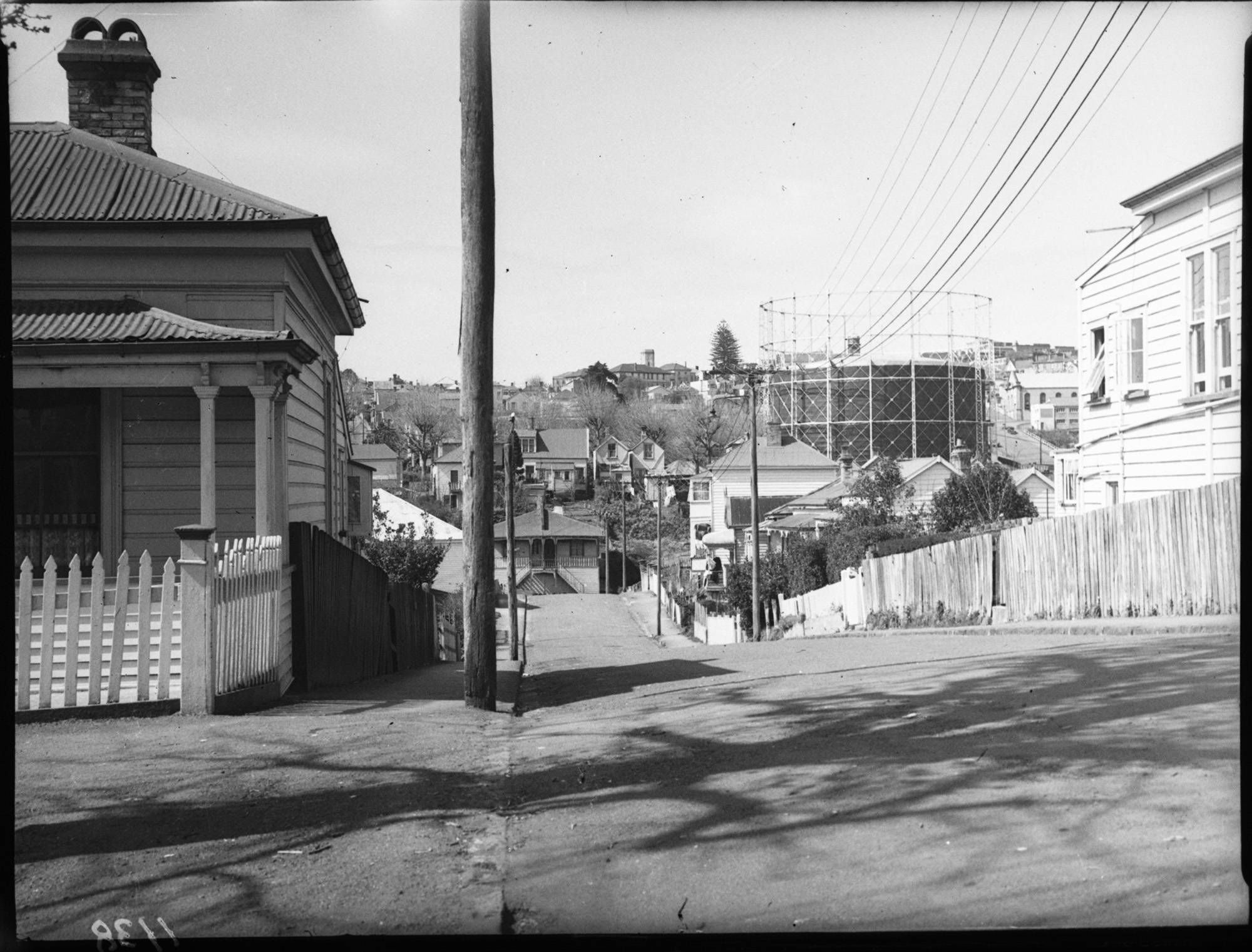
NEW ZEALAND'S URBAN PLANNING CRUCIBLE
This aerial photo of Waiatarau Freemans Bay is from 1970, not long after a period of unprecedented change in the central Auckland suburb.
The rapid—and often disputed—transformation the area underwent has been called a "crucible of urban development" in Aotearoa. It shapes communities, architecture and town planning to this day.
Janice Cheeseman was six years old when she left Freemans Bay in 1953, however her memories succinctly capture this world in flux. Join her as she recalls this time.
Photo courtesy of Auckland Libraries Heritage Collections 580-20154
WAIATARAU
NEW ZEALAND HERITAGE LIST RĀRANGI KŌRERO
This section of the photograph highlights the silos and warehouses that perch at the edge of Waiatarau Freemans Bay. However, until the late nineteenth century the area was made up of tidal flats, once rich with life in and above the waters. It has a long history as a place of kai gathering for Māori and was known for fishing and trade.
The pā at Te Tō on the western headland was occupied by Te Waiohua before the isthmus came under the control of Ngāti Whātua in the mid-1700s. Te Paneiriiri, the pā on the eastern headland is associated with Ngāti Paoa.
Māori maintained a presence at Waiatarau during and after the establishment of Auckland as the colonial capital, processing fish on a structure known as Te Koranga at the foot of what is now Victoria Street West, and continuing to land waka on the foreshore.
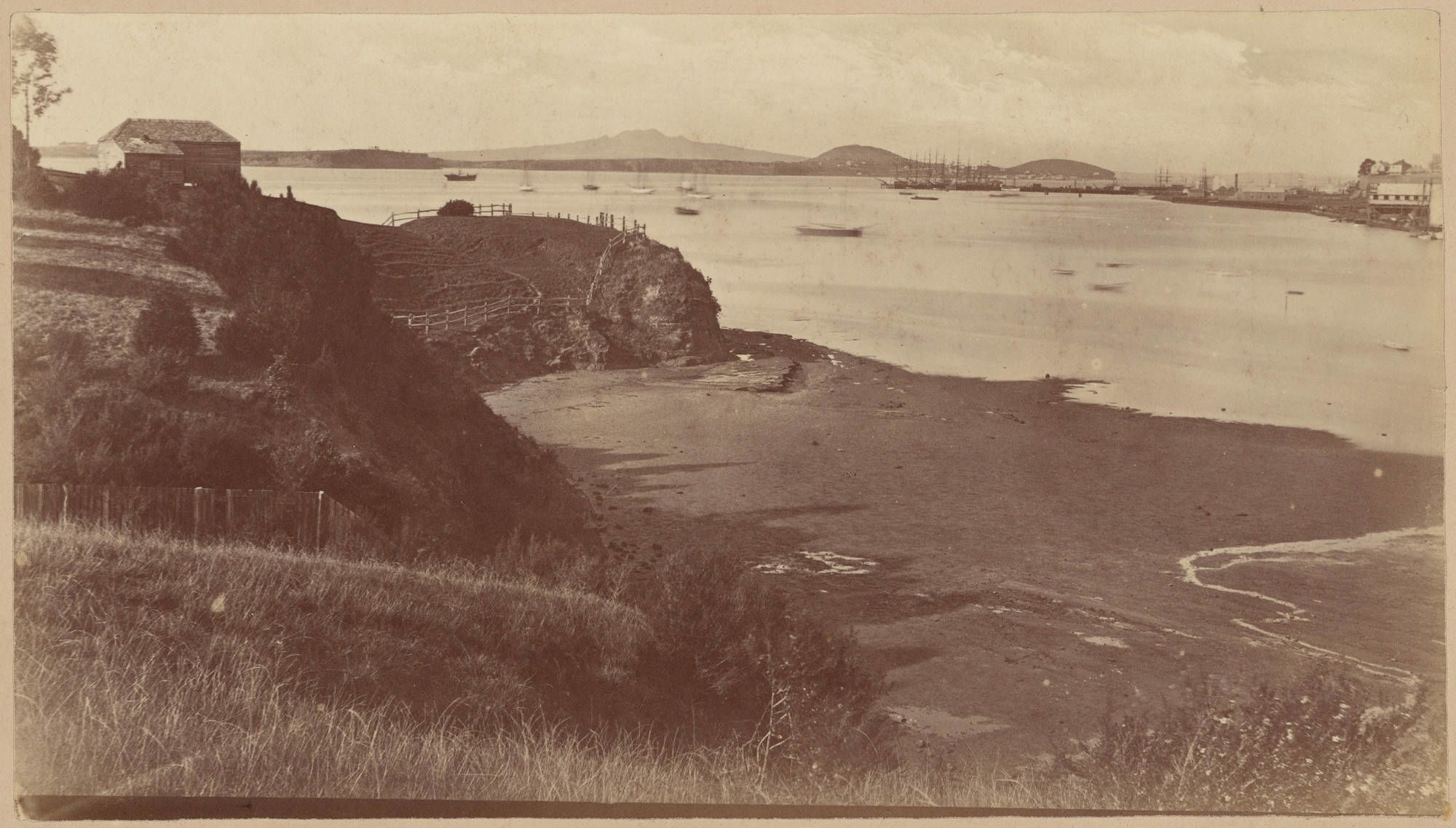
Waitematā Harbour from Freemans Bay (c.1880s) courtesy of Auckland Libraries Heritage Collections 1746-01
Waitematā Harbour from Freemans Bay (c.1880s) courtesy of Auckland Libraries Heritage Collections 1746-01
"NIGH ON 40 YEARS"
Established in 1862, the Auckland Gas Company first set up in Freemans Bay in the 1880s. It played a key role in the transformation of the area, contributing to vast reclamation works that provided land for Victoria Park.
JANICE
My father had been apprenticed in the 1920s at the age of 12 to Swales the Plumber in Ponsonby and had almost completed his time to become qualified as a tradesman, when the Depression caused his employer to ‘let him go’.
His stepfather John (Jack) Radcliffe Peter worked for the Auckland Gas Company, and in 1934 about the time when my father married my mother, Jack suggested that having trained as a plumber and also as an electrician (for plumbers were the first to do electrical installations) my father should apply for a job there. Thus started his nigh on 40 years of employment at that company.
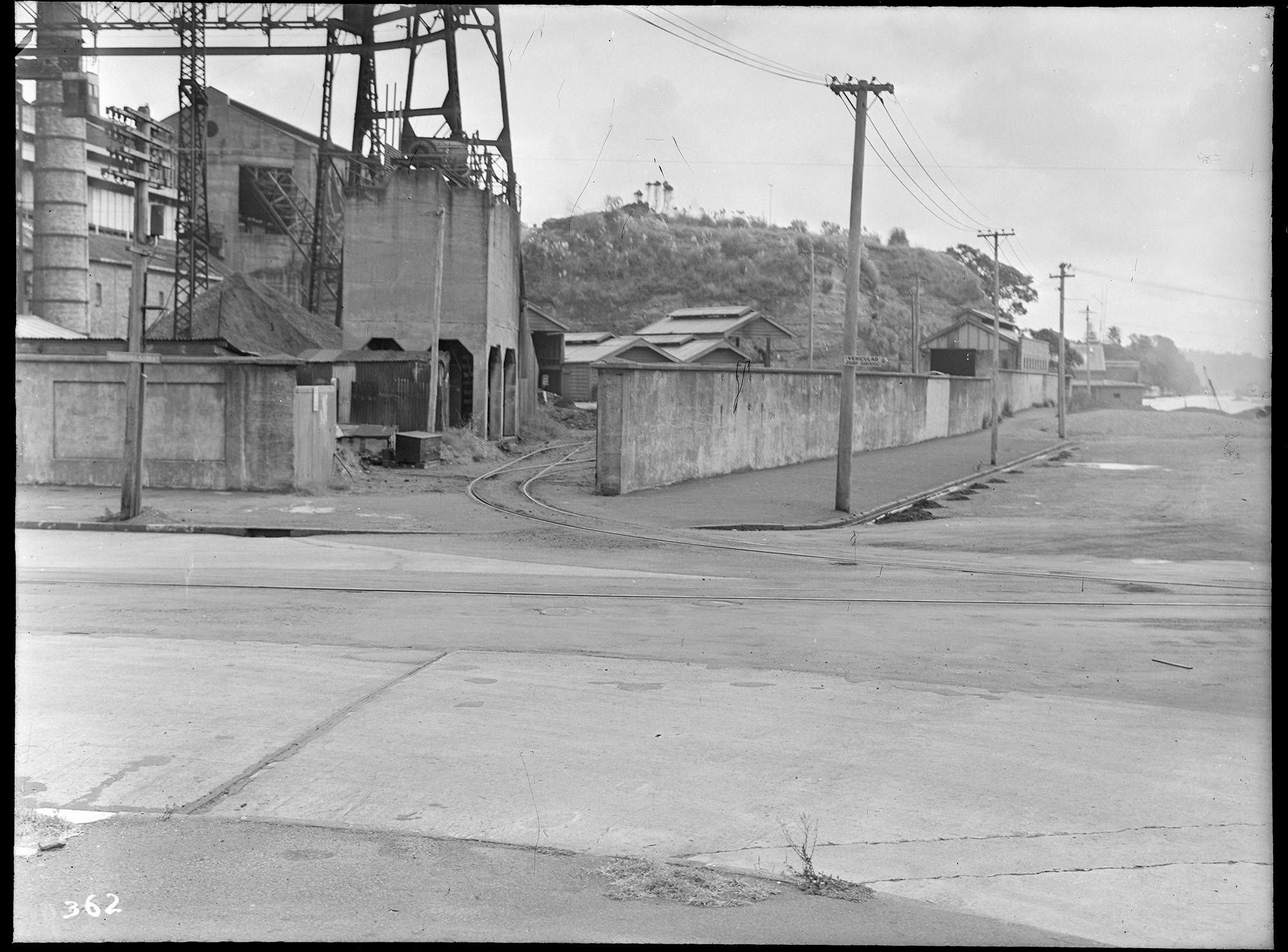
Auckland Gas Company works (1949) courtesy of Auckland Libraries Heritage Collections 580-00464
Auckland Gas Company works (1949) courtesy of Auckland Libraries Heritage Collections 580-00464
"BIG ENOUGH FOR OUR FAMILY OF THREE"
This section of the photograph highlights some of the denser areas of housing in Waiatarau Freemans Bay. For many Auckland newspapers, the suburb was viewed with suspicion. Headlines highlighted fires, vandals, escaped prisoners and sub-standard rental accommodation. However, Freemans Bay was also home to a strong working-class community.
JANICE
At the time of my birth in 1947, my parents were living in Freemans Bay in an Auckland Gas Company house at 112 Franklin Road... The house was small, but big enough for our family of three.
A rag and bone man’s horse and cart used to come down Franklin Road when I was old enough to know about it, as I remember that one day my mother noticed horse manure dropping onto the road, and she asked my father to go out with a shovel and get it for the garden. He was not very receptive to that idea!
Outside and behind the house was the small vegetable garden which my mother wanted the manure for and a wash house... In the wash house I can still picture my mother standing at the copper, with the steaming water and hot fire hole beneath, holding the furry, wooden pole she used to stir and lift the hot clothes.
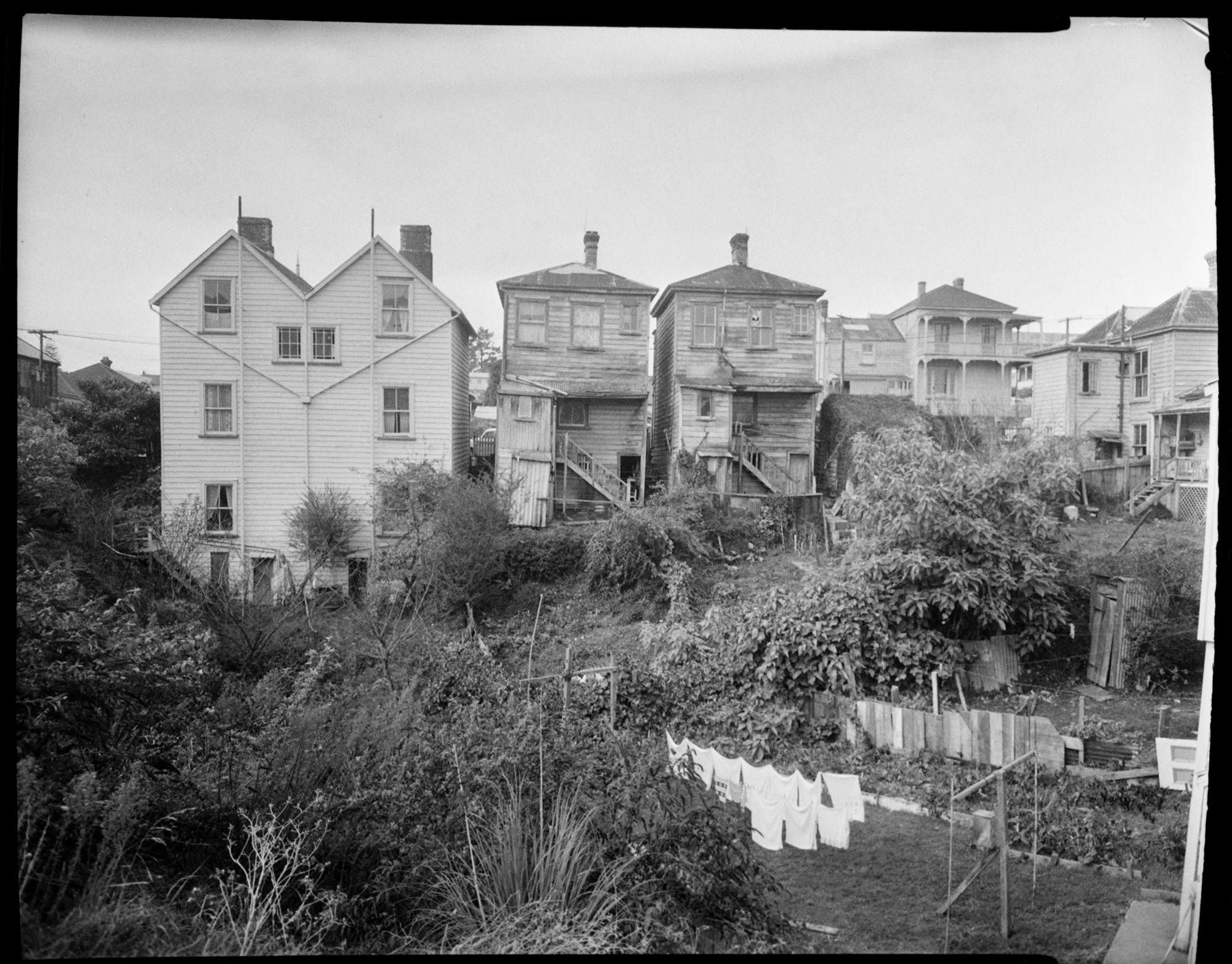
Beresford Street houses (1959) courtesy of Auckland Libraries Heritage Collections 580-03750
Beresford Street houses (1959) courtesy of Auckland Libraries Heritage Collections 580-03750
"ON CALL"
One of the key landmarks in Freemans Bay were the gas holders—also referred to as gasometers. The gas holders were adjacent to the Rob Roy Hotel (now the Birdcage) and the Council destructor (now Victoria Park Market).
JANICE
My father’s job involved checking on the condition of the two gas holders in the yard and the pressures of the gas feeding into them from the Beaumont Street works, while making sure that the sheds in the yard which contained racks of pipes and fittings and other supplies ready for gas installations around Auckland, were secure.
I think my father was on duty or on call for 24 hours a day, with regular walking around the property and climbing up the framework of the holders to inspect them for safe operation. When I learned to walk, I sometimes accompanied my father around the gas yard, stopping to look at the oily, colourful ‘rainbows’ in the puddles on the ground, and on the water in the ‘moats’ that the gas holders sat in.
Growing up I was aware that my father had one permanently bent finger. I learned that one day when he had been working around a holder, a signet ring on that finger had somehow become caught in the works of the holder. He had to endure some time of having his weight suspended from his finger as the holder rose, until someone came by and he could be extricated. He never again in his life wore a ring.
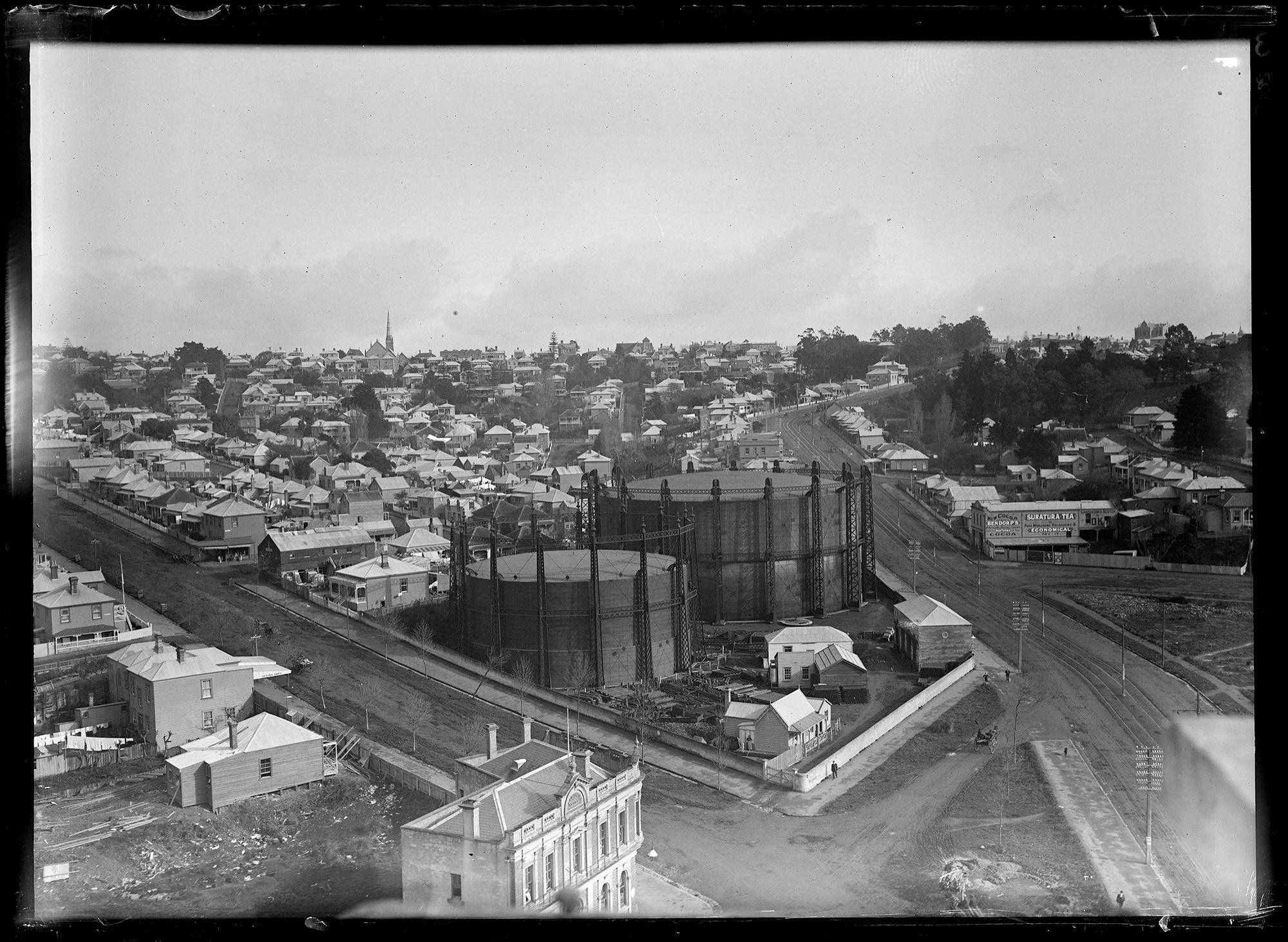
Franklin Road and College Hill (1905) courtesy of Auckland Libraries Heritage Collections 1-W0213
Franklin Road and College Hill (1905) courtesy of Auckland Libraries Heritage Collections 1-W0213
NEIGHBOURS: THE LUCKHURSTS
JANICE
Mr and Mrs Luckhurst were an elderly couple who had come from the north of England somewhere. Their broad accent made it difficult for me as a child to understand immediately what they were saying. They lived in one of the now historic cheek-by-jowl concrete two-storey houses up Franklin Road from us.
My mother knew them from being fellow members of the Independent Order of Oddfellows which met in the Lodge hall in Renall Street, Ponsonby. The Oddfellows Lodge, and others like them, were important socio-economic structures in the time before social security provided by the government.

Oddfellow (c.1930s) courtesy of Auckland Libraries Heritage Collections Footprints 02012
Oddfellow (c.1930s) courtesy of Auckland Libraries Heritage Collections Footprints 02012
NEIGHBOURS: E.H. FOSTER
JANICE
E.H. Foster was a cabinetmaker with a factory in Scotland Street. My mother worked for him as the accountant who kept the books and made up the wages for his workmen.
He and his skilled craftsmen were commissioned by the Government to make New Zealand's wedding present for Princess Elizabeth and the Duke of Edinburgh. It was a large beautiful writing desk with native tree leaves and flowers depicted in the native timber veneer, and highly polished. I wonder what castle that desk is in today?
The men from E.H. Foster’s cabinetmaking business would sometimes go up to the Hydra bacon factory (at the top of College Hill on the south side), which sold pork and bacon products to locals, to buy their lunch—two cooked pig’s trotters—for sixpence.
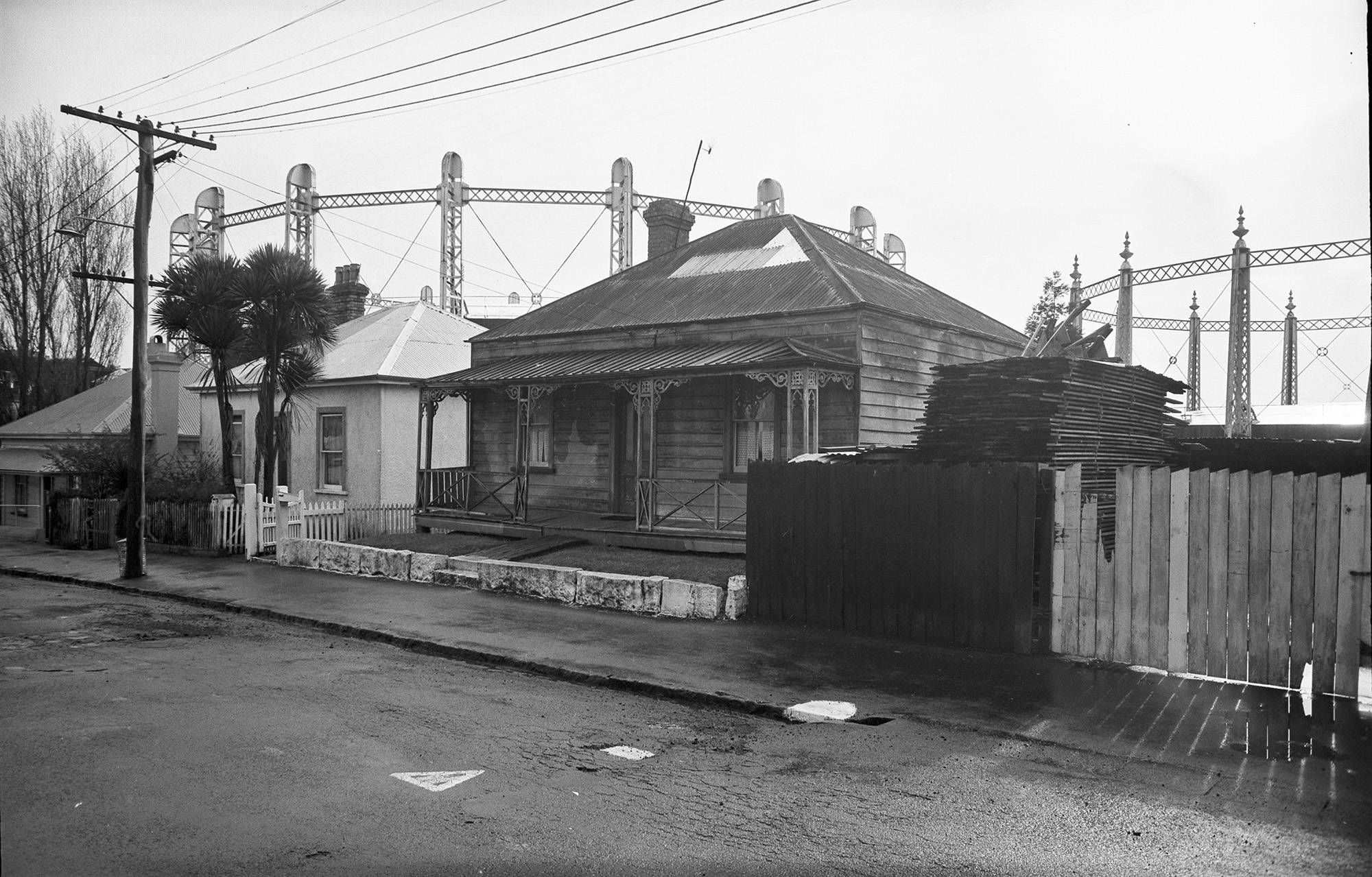
Scotland Street (1964) courtesy of Auckland Libraries Heritage Collections 580-10563
Scotland Street (1964) courtesy of Auckland Libraries Heritage Collections 580-10563
NEIGHBOURS: ERNIE STRACHAN
JANICE
I think he had a sheet metal workshop among some light industrial buildings now gone from the landscape which were across the road from the gas yard. I went there with my father occasionally when he went to get something made or get some sheeting he needed to make something.
I have a copper money box in the shape of a windmill which he made for me. I've tried to look online to find exactly where the workshop was, but have not yet succeeded.
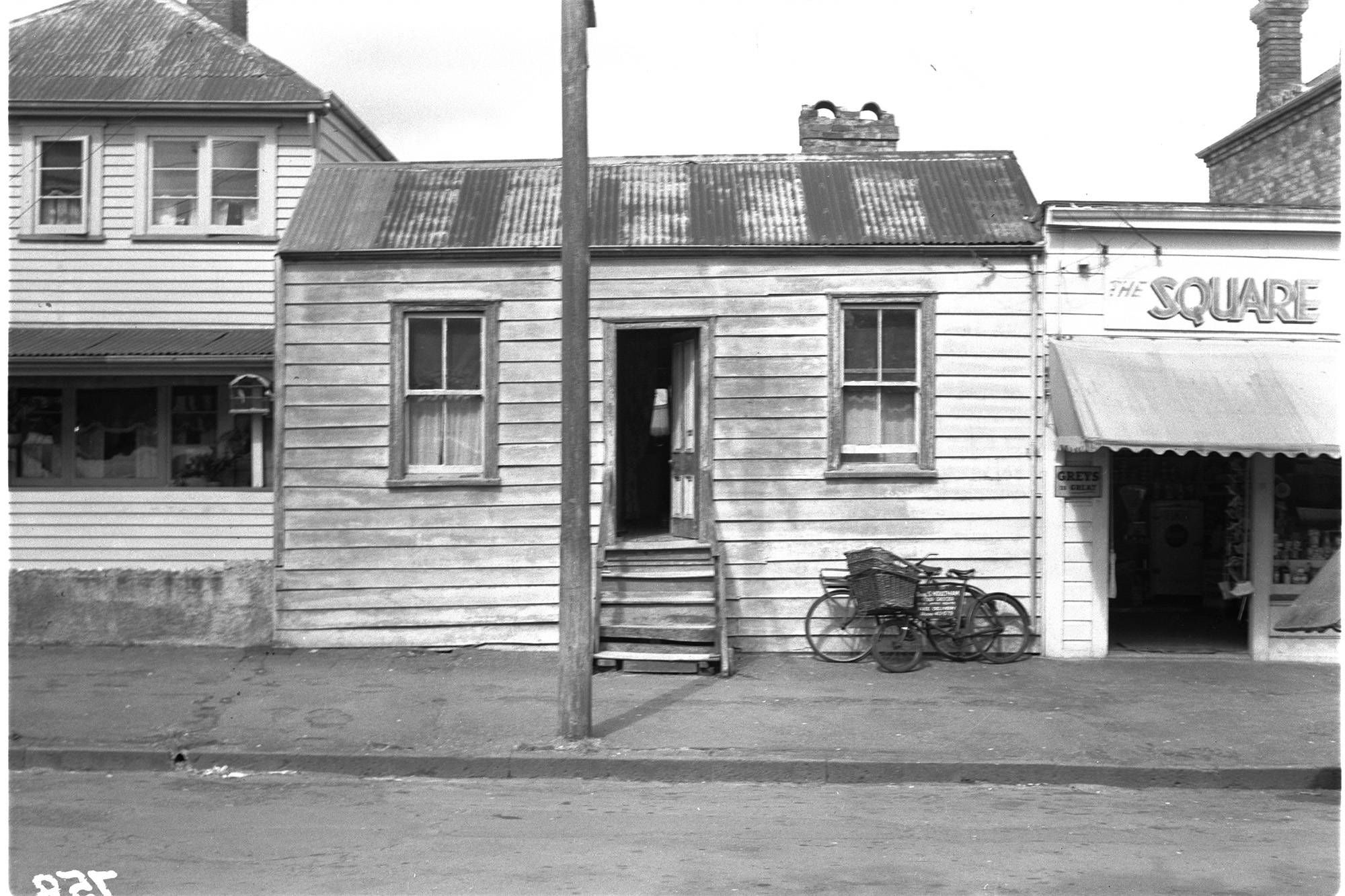
Freemans Bay (1952) courtesy of Auckland Libraries Heritage Collections 580-00848
Freemans Bay (1952) courtesy of Auckland Libraries Heritage Collections 580-00848
STAR FLATS
In this section of the photograph, you can see several newer buildings—these are examples of the modernist Star Flats, which were part of a wider plan for the redevelopment of Waiatarau following the Second World War.
The development was in part a response to the living conditions in the area, however, there was also resistance from many community members, including the Freemans Bay Residents Welfare Association, the Māori Women’s Welfare League and the Māori Community Centre.
JANICE
Our time at 112 Franklin Road came to an end in 1953 when my maternal grandmother died and bequeathed her house to my mother. My parents now had the opportunity to live in a house of their own, and my father was able to change his role from gas holder attendant to become a ‘ganger’, responsible for a gang of men who would work on the repair or installation of gas mains in the ground.
Looking back as an adult, I realised the people in the community I lived in were generally poor, but honourable. They helped each other according to their Christian faith, whatever the denomination, and they 'made do'. Food was simple—mince, stew, soup, occasionally lamb chops, offal, cheap sheep cuts, a chicken and peas from the pod only at Christmas. Vegetables were carrots, cabbage, potatoes, pumpkin, kūmara, silverbeet, cauliflower—grown in the back garden where possible.
It seemed amazing when my mother bought Birds Eye frozen peas, set hard together in a block. My mother had to struggle to break a section off the block in order to cook only some of them, enough for our family of three, but peas could now be eaten out of season!
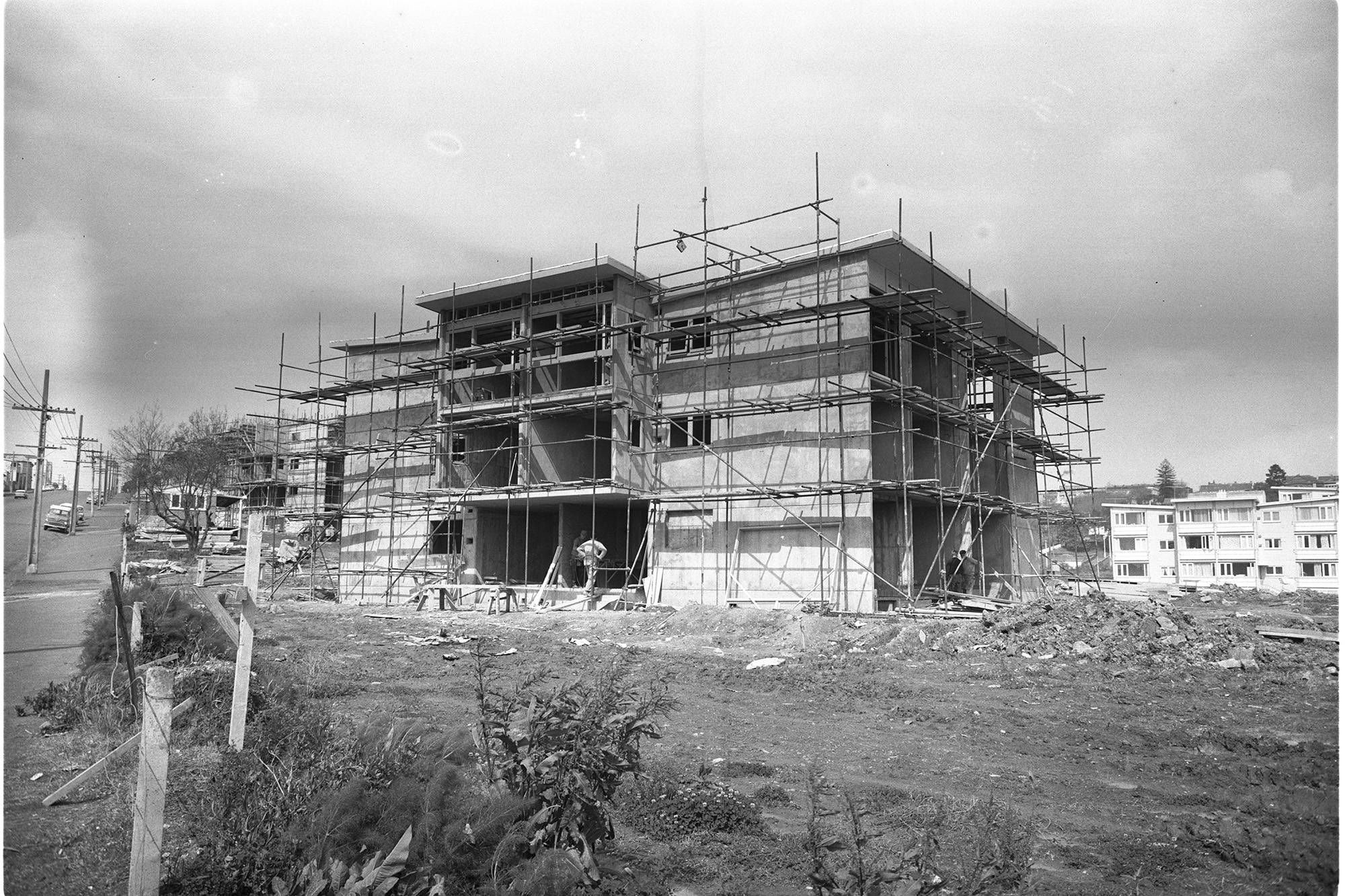
Phillips Street Flats (1963) courtesy of Auckland Libraries Heritage Collections 580-07857
Phillips Street Flats (1963) courtesy of Auckland Libraries Heritage Collections 580-07857


